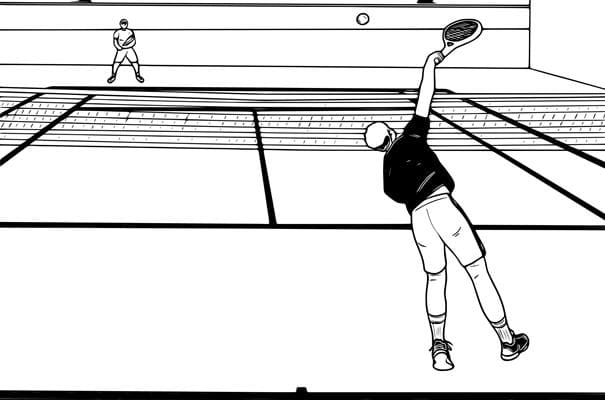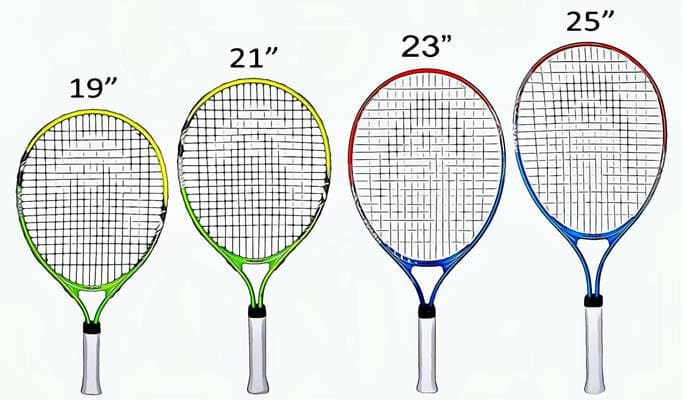In the article “Tennis” we will tell you about the summer sport, tennis big time. You’ll learn the history, brief rules of the game, and a side effect of a tennis racket.
#Tennis #BigTennis #ProTennis #SummerSports #LawnTennis
Formally, tennis appeared closer to the end of the 19th century, to be exact in 1873, and it happened in England. However, the history of tennis began in ancient Rome with a game called “trigon”. Players threw from one court to another a small solid ball, and instead of rackets were special shields, which were put on his arm.
In the 15th century. in games with the ball appeared wooden sticks with a wide flat end for knocking the projectile. Quite soon they turned into racquets. Already in the 16th century, games with a ball and racket were a popular English pastime. Tennis was invented a couple of centuries before it was invented, but all that was needed was to make detailed rules of the game, which was done in 1873.

It was then that English Major Walter Clopton Wingfield decided to entertain his guests with a game based on previously developed rules. The guests liked the entertainment, and a year later the enterprising Englishman patented a new game. It got two names at once – “spherical” and “lawn tennis”.
Russian tennis players and tennis players worthily represent our country at international competitions. One of the famous is Elena Dementieva, Honored Master of Sports of Russia. Maria Sharapova’s achievements are impressive; she is the only Russian to reach the Grand Slam finals seven times.
But the most famous Russian tennis player is Yevgeny Kafelnikov who was the first Russian tennis player to win a Grand Slam singles title in 1996. Three years later he became the first racket of the world, and in 2000 he added an Olympic gold medal to his collection of awards.
At the moment, Daniil Medvedev, who became the first racket of the world, and won a Grand Slam tournament, he even conquered the final ATP tournament in 2020, is showing impressive results. And all this was only in singles, but there were also achievements as part of the Russian team. He won the Davis Cup and the ATP Cup in 2021.

Everyone knows the basic rules of tennis. Games are played in both singles and doubles, i.e. two players or two pairs of players play. The goal of the game is to throw the ball to the opponent’s side so that he cannot return it. That would seem to be all, but in fact the rules of this game are quite complicated.
A tennis match consists of “sets” and “games”. A set is in English a “party”, and a game is a “game”. There can be from 3 to 5 sets in a match. In a three–set match, the winner is the tennis player who won two sets, and in a five-set match – 3 sets, respectively.
To win a set, you must win six games with a two-game advantage. If the score in the set is 6 – 5, then an extra game is played. If the score is 7 – 5, the set is over. Well, and if the score becomes 6 – 6, then you have to arrange a tie-break, which in English means “break a draw”. The tie-break must also be won by 2 points.
The game starts with serving. This is a very, very important moment of the bout. The right to serve goes from one player to the other in each game. When serving, it is necessary to hit a certain sector of the opponent’s field, which is called the “serving area”. If a player misses and the ball hits the serve area line or goes into the net, it is possible to serve again. A second mistake, on the other hand, brings the opponent a certain number of points.

The first serve is worth 15 points, meaning that if the athlete who serves wins the serve, the score is 15-0 or 0-15 if his serve fails. The next serve is worth 30 points and the third serve is worth 40 points.

Tennis is played with special racquets, which are larger and more massive than badminton racquets. The first models were made of wood, then they were replaced by rackets made of metal and fiberglass, but today’s rackets are usually made of graphite, or rather carbon fiber. It, as well as graphite, consists of carbon atoms connected in a special way. These fibers are combined with other materials to give the racket the necessary properties.
Data on the materials from which the racket is made, entered in its passport. The passport data is written on the rim of the racket and when choosing a projectile, the tennis player must study the composition of the material from which it is made.
About the tennis ball. The first balls were made of wood, then leather, filled with wool and other improvised materials. The balls were heavy and quite dangerous. Getting hit by such a ball was a guarantee of a good bruise for tennis players. Now balls are made of rubber and covered with flannels. A special inert gas is pumped inside the ball to make it more elastic.

But some manufacturers have gone even further, they put a special pellet into the blank before the rubber vulcanizes. When heated, the tablet decomposes, releasing gas and creating additional pressure inside the ball. Thanks to new technologies, modern balls are so mobile and resilient.
The popularity of tennis attracts not only athletes and spectators, but also structural engineers, and they still have work to do. If you’ve ever tried to bounce a ball with a racket, you’ve probably felt a vibration or recoil in your hand after hitting it.
During championships, when athletes have to throw and bounce hundreds of punches, vibration becomes a serious problem. It causes muscle fatigue and damages ligaments and tendons. No wonder that manufacturers are trying to come up with more and more new ways to reduce vibration.
What did the designers come up with? A careful choice of materials, weight and stiffness of a racket allowed controlling both vibration transmission and recoil on a tennis player’s hand. It consisted in changing the weight distribution and changing the flexibility along the whole length of the racket. For example, a wide profile at the top of the head and neck, narrow in the middle of the head.
The stiffness of a racket, in turn, is a value that is composed of several characteristics. These include head area, rim width and handle length. The vibration or oscillation of a racquet is considered the main side effect of stiff racquets, causing injuries.
Modern tennis racquet models and the dynamics of the ball’s rebound from surface strings have corrected our view of the role of strings. For a long time, athletes have believed that the more tension in the strings, the more powerful the shot, but the less control the ball has. And weak tension reduces ball speed, but improves control. It turned out that the opposite was true.
As a rule, the tennis section is accepted only from the age of 5 years, and many people come to the sport even later. In sports schools there are usually groups:
- from 3 to 6 years old;
- from 7 to 11 years old;
- from 12 to 17 years old.
Whenever you come to sign up for a section, you can be sure that there will be a place for you. The main thing, as in any other sport, is not to skimp on classes. Training usually takes place three times a week and lasts from 30 minutes to 1.5 hours.

We also advise practicing at home as well, because you don’t need any special equipment. Take a racket in your hands and train. Do not use an adult racket for this, because racket can be an adult or a child’s racket. It is best to start with a child’s or youth’s racket. They have a bigger head and a shorter handle. These racquets are much easier to control than those of the PRO category.
Tennis lessons will not only give you pleasure, they will improve your eye sight, coordination, speed, mobility of arms and legs, endurance. If you have decided to take up tennis, we congratulate you on your choice. Have successful tournaments!
Lawn Tennis
FAQs
What is tennis?
Tennis is a summer Olympic sport in which athletes use special rackets to throw a felt ball over a stretched net in the center of a court (rectangular area). The game is played in both singles (1 on 1) and doubles (2 on 2).
What kinds (types) of tennis courts exist?
There are 4 main types of courts in tennis: Dirt (a mixture of clay, sand and bricks), Hard (asphalt, concrete with acrylic surface), Grass (natural grass on compacted soil) and Carpet (synthetic grass or any other roll surface). There are other types of courts, such as rubber and parquet, but they are not used in official competitions.
What are the most prestigious tournaments in tennis?
The most prestigious tennis tournaments are the Grand Slam: Wimbledon, U.S. Open, Australian Open and French Open. The ranking continues with the tennis association finals: WTP and ATP. Then come the Masters tournaments, where you can earn 1000 points in the rankings (ATP 1000, WTP 1000). Among national teams, the most prestigious are: Davis Cup, Billie Jean King Cup and Holpana Cup.









